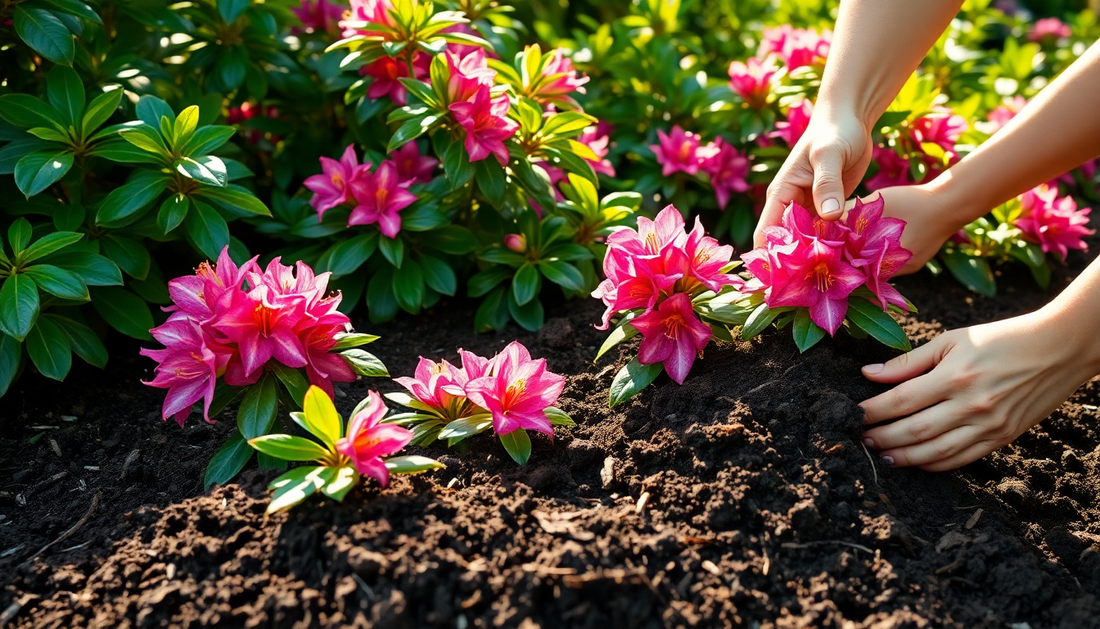
Unlocking the Secret to Thriving Acid-Loving Flowers: The Best Soil Amendments
As a passionate gardener, I've always been fascinated by the vibrant hues and delicate blooms of acid-loving flowers. From the stunning azaleas to the captivating hydrangeas, these plants have a unique charm that can transform any garden into a true oasis. However, cultivating these beauties can be a bit of a challenge, as they require specific soil conditions to thrive.
In this comprehensive guide, we'll explore the best soil amendments to ensure your acid-loving flowers reach their full potential. Whether you're a seasoned green thumb or a budding gardener, this post will equip you with the knowledge and tools to create the perfect growing environment for your beloved blooms.
Understanding Soil Acidity
The key to success with acid-loving flowers lies in understanding the importance of soil pH. These plants thrive in acidic soil, typically with a pH range between 4.5 and 6.0. In this environment, the essential nutrients they require, such as iron, magnesium, and phosphorus, are readily available and easily absorbed by the plant's roots.
Conversely, if the soil is too alkaline, with a pH above 7.0, these nutrients become less accessible, leading to nutrient deficiencies and stunted growth. This is why it's crucial to test your soil's pH and make the necessary adjustments to create the ideal conditions for your acid-loving flowers.
The Best Soil Amendments for Acid-Loving Flowers
-
Sphagnum Peat Moss: Peat moss is a highly effective soil amendment for lowering soil pH and increasing acidity. It's an organic material that decomposes slowly, providing a long-lasting source of acidity. Incorporate peat moss into your garden beds or potting mixes to create the perfect environment for your azaleas, hydrangeas, and other acid-loving plants.
-
Elemental Sulfur: Elemental sulfur is a powerful acidifier that can quickly lower soil pH. It works by releasing hydrogen ions into the soil, which neutralize the alkaline compounds and create a more acidic environment. Be sure to follow the recommended application rates to avoid over-acidifying your soil.
-
Aluminum Sulfate: Another effective option for lowering soil pH is aluminum sulfate. This compound releases aluminum ions into the soil, which can effectively reduce the pH and make the environment more suitable for acid-loving plants. Use caution, as excessive aluminum can be harmful to some plants.
-
Pine Needles: If you have access to pine trees, the fallen needles can be an excellent source of natural acidity. Collect and incorporate the needles into your garden beds or use them as a mulch around your acid-loving flowers. As the needles decompose, they will release acids that will lower the soil pH over time.
-
Ammonium Sulfate: This nitrogen-rich fertilizer can also help lower soil pH. When applied, the ammonium ions in the fertilizer are converted to nitric acid, which helps to acidify the soil. Use this amendment sparingly, as excessive nitrogen can lead to other imbalances in the soil.
-
Compost: While compost may not directly lower soil pH, it can help improve the overall soil structure and nutrient content, which can indirectly benefit acid-loving plants. Choose a compost made from materials like pine bark, oak leaves, or other acidic sources to further enhance the soil's acidity.
Remember, the key to success is to test your soil's pH regularly and make adjustments as needed. Start with small amounts of these amendments and monitor the results closely to ensure you don't over-acidify the soil, which can also be detrimental to your plants.
Maintaining Soil Acidity
Keeping your soil at the optimal pH range for acid-loving flowers is an ongoing process. Here are some tips to help you maintain the perfect growing conditions:
- Retest your soil's pH every 1-2 years and make adjustments as needed.
- Apply a fresh layer of mulch, such as pine needles or shredded bark, around your plants to help retain acidity.
- Avoid using lime or other alkaline amendments near your acid-loving flowers.
- Water your plants with rainwater or distilled water, as tap water can sometimes be slightly alkaline.
- Consider growing your acid-loving flowers in raised beds or containers filled with a specialized acidic potting mix.
By following these guidelines and incorporating the best soil amendments, you'll be well on your way to creating a thriving, vibrant garden filled with the stunning blooms of your beloved acid-loving flowers.
Conclusion
Unlocking the secret to successful acid-loving flowers is all about understanding the importance of soil pH and using the right soil amendments to create the perfect growing conditions. From sphagnum peat moss to elemental sulfur, the tools you need to nurture these beautiful plants are within reach.
Remember, gardening is a journey, and with a little patience and dedication, you can transform your outdoor space into a true oasis of color and fragrance. So, roll up your sleeves, get your hands dirty, and start cultivating the acid-loving flowers of your dreams!







No comments